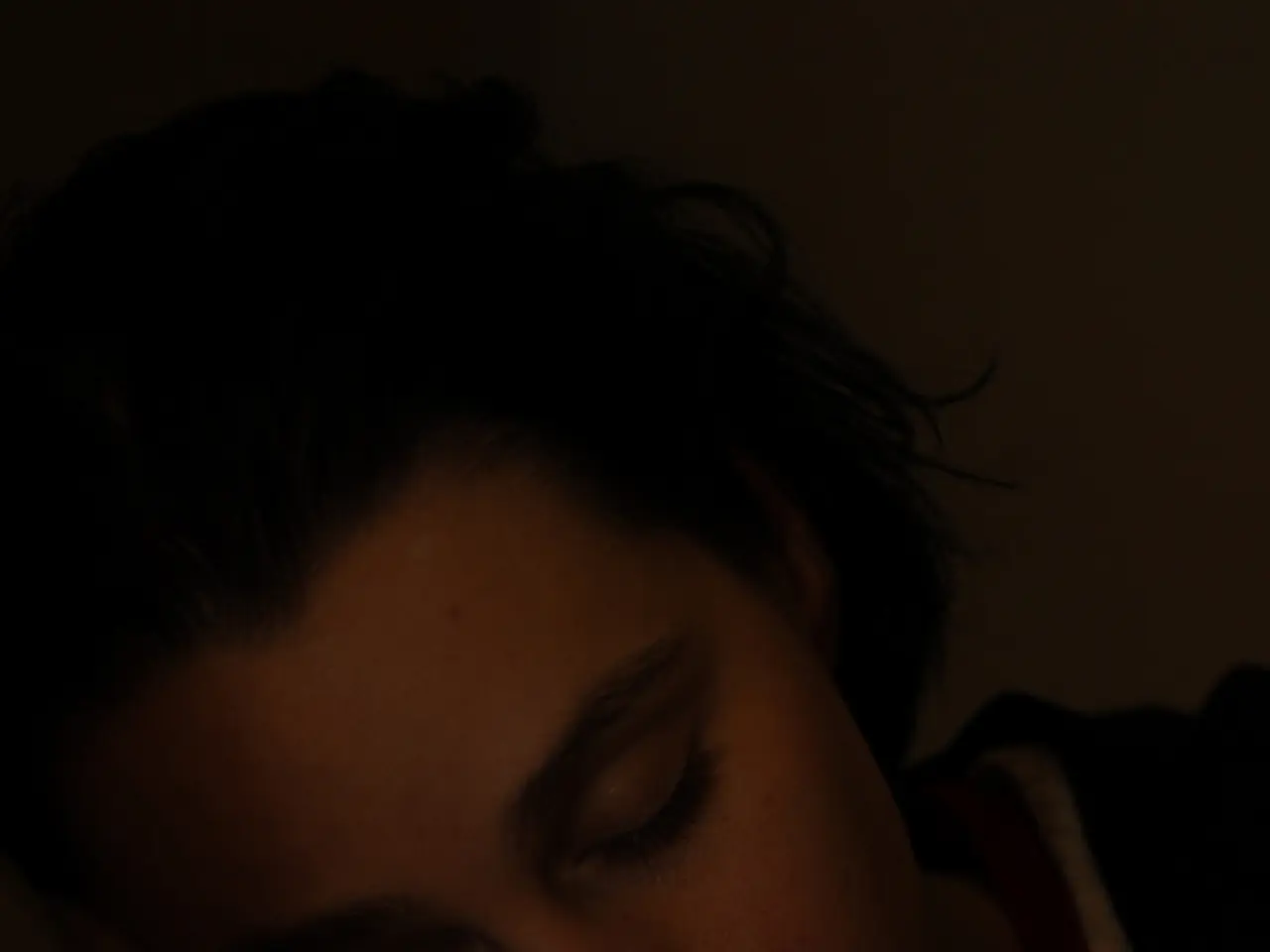Connection between Sleep Apnea and Dry Eyes: Insights, Remedies, and Further Information
Sleep apnea, a common sleep disorder, and dry eyes, a condition characterised by inadequate tear production, can often coexist. This connection stems from the physiological effects of sleep apnea and its treatment with Continuous Positive Airway Pressure (CPAP) masks [1][5].
Obstructive Sleep Apnea Syndrome (OSAS) leads to repeated breathing pauses and reduced oxygen saturation during sleep, affecting tear secretion and tear film stability, increasing the risk of dry eye syndrome. Additionally, the use of CPAP masks can exacerbate dry eye symptoms by causing airflow from the mask to be directed toward the eyes, which increases tear film evaporation and irritates the ocular surface [1][5].
Sleep apnea also disrupts sleep structure, impacting rapid eye movement (REM) sleep, further exacerbating dry eye symptoms and eye health [1]. Untreated sleep apnea is linked to more serious eye conditions such as glaucoma, floppy eyelid syndrome, papilledema, non-arteritic anterior ischemic optic neuropathy (NAION), and retinal vein occlusion [3].
Managing both sleep apnea and dry eyes simultaneously requires a multi-faceted approach. Here are some strategies:
- CPAP mask adjustments: Using well-fitted masks or those designed to reduce airflow leakage toward the eyes can help minimize dry eye symptoms caused by air blowing into the eyes [1][5].
- Improving sleep apnea: Effective treatment of sleep apnea with CPAP or other therapies can improve blood oxygen levels and sleep quality, indirectly supporting better tear production and eye health [1].
- Dry eye therapies: This includes artificial tears, lubricating ointments, and treatments targeting meibomian gland function to restore tear film stability [1][5].
- Eye protection: Using moisture goggles or eye shields during sleep may help retain moisture in the eyes.
- Lifestyle modifications: Ensuring adequate hydration, managing environmental factors (humidity), and controlling systemic conditions that worsen both dry eyes and sleep apnea.
Because CPAP therapy is essential for sleep apnea but may worsen dry eyes, careful mask selection, fitting, and adjunctive dry eye treatments are critical for simultaneous management [1][5].
A proper diagnosis of sleep apnea is the first step in treating both conditions. Using a humidifier, especially a heated one when using a CPAP machine, can help prevent dry eyes. Consulting a healthcare professional is essential for a proper diagnosis and treatment plan for both sleep apnea and dry eyes.
Treatment options for sleep apnea include CPAP therapy, oral appliances, surgery, and lifestyle changes like maintaining a moderate weight or quitting smoking. Treatment for dry eyes may include artificial tears, eye ointments, prescription medications, and eyelid hygiene.
In summary, managing sleep apnea and dry eyes requires a comprehensive approach that includes optimising CPAP usage, addressing dry eye symptoms with appropriate ophthalmic care, and maintaining overall health and wellbeing.
- The repeated breathing pauses and reduced oxygen saturation during sleep experienced by those with Obstructive Sleep Apnea Syndrome can lead to an increased risk of dry eye syndrome.
- The use of CPAP masks, while necessary for treating sleep apnea, may exacerbate dry eye symptoms by causing airflow towards the eyes and increasing tear film evaporation.
- Effective treatment of sleep apnea with CPAP or other therapies can improve blood oxygen levels, which indirectly supports better tear production and eye health.
- Strategies for managing both sleep apnea and dry eyes include CPAP mask adjustments, improving sleep apnea treatment, dry eye therapies, eye protection, and lifestyle modifications.
- Using moisture goggles or eye shields during sleep can help retain moisture in the eyes, and ensuring adequate hydration and managing environmental factors can also alleviate dry eye symptoms.
- Treatment options for sleep apnea can involve CPAP therapy, oral appliances, surgery, and lifestyle changes, while treatment for dry eyes may include artificial tears, eye ointments, prescription medications, and eyelid hygiene.
- Given that CPAP therapy is essential for sleep apnea but may worsen dry eyes, careful mask selection, fitting, and adjunctive dry eye treatments are critical for simultaneous management.
- A proper diagnosis of sleep apnea by a healthcare professional is the first step in treating both conditions, and using a humidifier, especially a heated one, can help prevent dry eyes during CPAP therapy.




